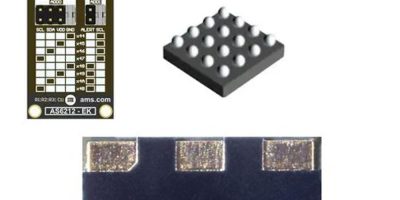Headsets and hearable devices can be reduced in size and power budget using the STMicroelectronics’ motion and bone-conduction sensor, said the company. The LSM6DV16BX can deliver a longer listening experience and superior hearing in TWS (true wireless stereo) headphones and AR / VR / MR headsets.
The integrated sensors can save space inside hearable devices including sports and general-purpose earbuds. It combines a six-axis inertial measurement unit (IMU) for head tracking and activity detection with an audio accelerometer for detecting voice through bone conduction in a frequency range that exceeds 1kHz.
The LSM6DSV16BX contains ST’s Qvar charge-variation detection technology for user-interface controls such as touching and swiping.
The LSM6DSV16BX sensor embeds ST’s Sensor Fusion Low Power (SFLP) technology, specifically designed for head tracking and 3D sound, and the in-the-edge processing resources featured in ST’s third generation MEMS sensors, including finite state machine (FSM) for gesture recognition, the machine learning core (MLC) for activity recognition and voice detection, and adaptive self-configuration (ASC), which automatically optimises performance and efficiency. These help to reduce system latency while saving overall power and offloading the host processor.
The enhanced integration and edge processing save up to 70 per cent of system power consumption and 45 per cent of PCB area. In addition, the number of pin connections can be reduced by 50 per cent, saving external connections, and the package height is 14 per cent less than earlier MEMS inertial sensors from ST.
The LSM6DSV16BX comes with many software examples, available on ST MEMS GitHub FSM and MLC model zoo. These include pick-up gesture detection to automatically turn on some device’s services, in-ear and out-of-ear detection in TWS headsets and head gestures for 3D sound in headphones. To save developer time, without starting from scratch, pre-integrated application examples are available in X-Cube-MEMS1 package.
The LSM6DSV16BX is in production now, available in a 2.5 x 3.0 x 0.74mm VFLGA package.
http://www.st.com/







